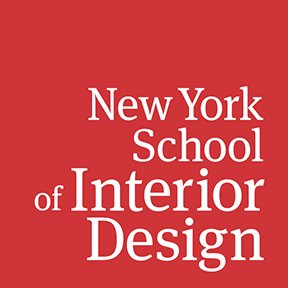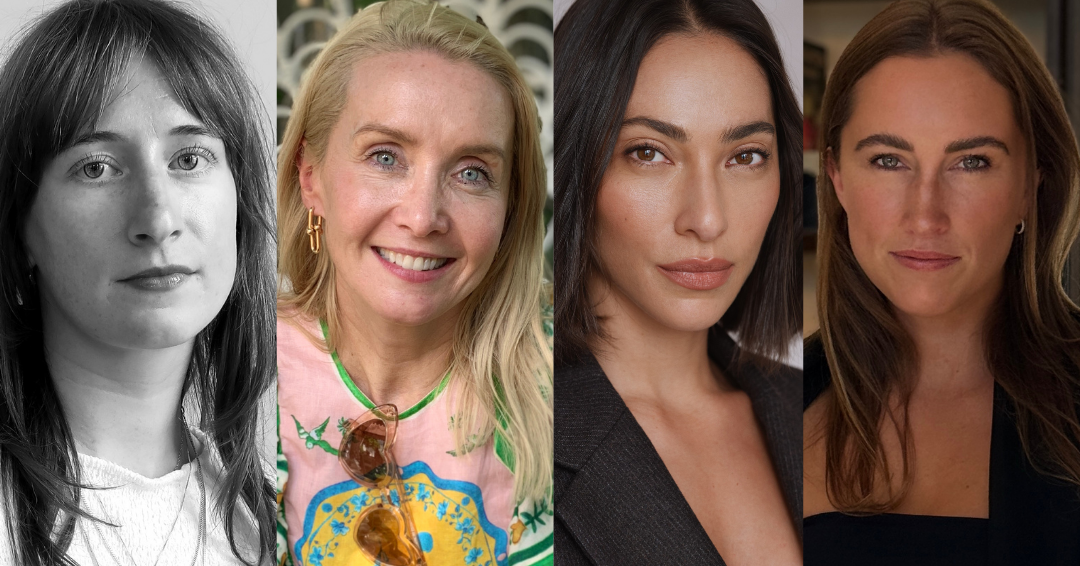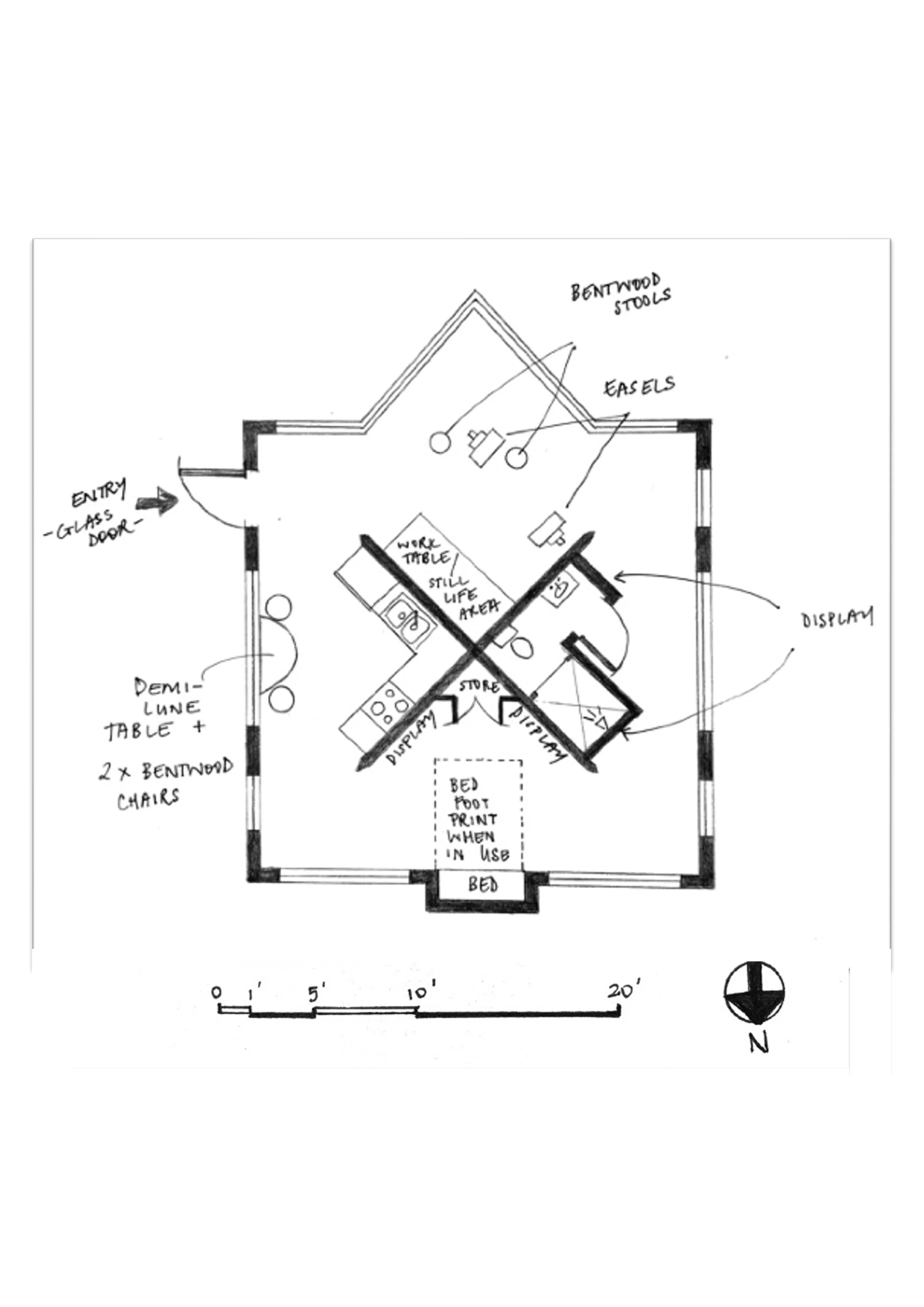No Interior Design Portfolio? No Problem. NYSID’s Stackable Degrees Remove Barriers
Carly Baker, Rebecca Dudley, Monica Bittenbender, and Frida Jansholt
Carly Baker (BFA), a senior in the BFA program at New York School of Interior Design, spent the first two decades of her working life as a professional ballerina, dancing for the Pittsburgh Ballet Theater, Oklahoma City Ballet, and Ballet Arizona. After high school, she skipped college and went directly to a dance company. In 2020, the COVID-19 pandemic shut down performances, and for the first time in her life, she had the time to wonder what was next for her, as most ballet dancers' careers end in their 30s. She’d always been creative and had a sense of the way the body moves through space, as well as a passion for design, but she’d never taken a design class and had no idea if she could draw. She came across the option of NYSID’s Basic Interior Design certificate (BID) and stackable undergraduate degree track in her research. “The BID felt like a good way to do a trial period and see if interior design was a good fit, because I had just spent 20-plus years of my life dancing, and I didn’t want to commit to a four-year degree without any background in visual art or design,” recalls Baker. “There's a difference between being on Pinterest and helping your parents renovate, versus actually practicing design. The BID felt like it wasn't this crazy leap for me because I would at least get a certificate out of it. It seemed like a responsible first step.”
The New York School of Interior Design is the only highly ranked academic institution that offers a Basic Interior Design Certificate (BID) for the first year of interior design higher education. No portfolio is required for admission to the program, which can be taken online, in-person, or a flexible combination of both ways. The first year of fundamental interior design education gives students all of the basic skills and knowledge to develop a portfolio and understand what the practice of design entails in ten courses. Says NYSID Dean and VP for Academic Affairs Ellen Fisher, “The BID is an introduction to interior design as a profession and to the challenges of an interior design education.” NYSID’s undergraduate programs: the one-year Basic Interior Design Certificate, the two-year Associate in Applied Science in Interior Design (AAS), and the Bachelor of Fine Arts in Interior Design (BFA) are stackable, which means if a student chooses to move forward to a higher credential, the credits and grades “stack” into the next degree.
Baker, who was living in Phoenix, Arizona, when she began her investigations into a second career, danced professionally for another year and a half, and then started NYSID’s online BID from Arizona in 2022. After her first year of study at NYSID, she transferred directly into the BFA program, and after her second year of study, she moved to New York to do her final two years of the BFA in person. She says, “I changed drastically in my BID year, because I started out knowing nothing and we were doing hand drafting, AutoCAD, Revit, and learning color theory, historical styles, and design thinking. As soon as I got into the first semester, I was like OK, I can do this, and I began to have the verbiage to explain my taste and choices. I applied to the BFA. Now that I’m working and have an internship, I feel confident in those basics. It's nice, too, because you don't have to do anything extra to create a portfolio for the BFA: you're just submitting your classwork from the first year.” Baker is taking advantage of all the BFA and New York City have to offer: she has an internship at the prestigious firm Pembrooke & Ives; she took one of NYSID’s travel-study courses in Chicago over the summer; and she is currently ideating her thesis in the Thesis Preparation studio. She says, “The pace and intensity of the studios increase in the final two years, when you move from the foundations to conceptual design set in real-world situations. It’s going well for me, and I believe it's because of my confidence in the foundations.”
Chair design for Basic Drafting by Carly Baker (BFA)
Rendering for Design Studio V: Contract C by Carly Baker (BFA)
Finding a Path to Your Next Career While Caring for Small Children
Rebecca Dudley (AAS), who has been accepted into the BFA program, once had a successful career as an executive in visual merchandising at Chanel. After she married, she and her husband had five children in rapid succession, and she spent a decade out of the workforce caring for her large family. “After ten years, I was getting restless and wanted something for myself again. I was drawn to interiors, but I knew it could not be a hobby. I needed a new professional direction,” recalls Dudley, who lives in Moss Vale, Australia. “After a decade in the ‘wilderness’, I didn’t think I could commit to a four-year degree. I wanted the possibility of attending a world-class program, but I knew I needed to go part-time and virtually, so I could balance the demands of family life, and the financial commitment of studying. The BID was a thoughtful way to reenter academic life.”
Dudley began the online version of NYSID’s BID in 2021, taking a couple of classes at a time. She found that even with five children in the home, she was able to study successfully and at her own pace through the synchronous and asynchronous distance-learning courses at NYSID. She says, “Distance learning at NYSID felt incredibly intimate for something that is online. The college has done a fabulous job of creating that collegiate spirit and connection in its online format.” Dudley applied to and entered the AAS, because, she says, “I knew the AAS would get me a stronger technical foundation, and let me look at materials and methods of construction and develop skills in digital presentation. Once again, it offered me the ability to jump off without committing to the full four years. In case life got messy, I knew that I could get that first degree finished.”
Now, at the end of her AAS studies, Dudley has been accepted into the BFA program. Dudley wants a career in residential design, so she’s anticipating layering specialized skills in the final semesters, in courses such as Architectural Woodwork Detailing and Kitchen & Bath Design. She’s also looking forward to working closely with a thesis advisor for a full year on her thesis project. She says, “To me, the BFA is credibility that shows potential employers I have mastered the practice of design. Also, I think the deeper study of the BFA allows you the full expression of your own individual design voice.”
Artist Studio in the Woods floor plan by Rebecca Dudley (AAS)
Floor plan for Design Studio II: Residential B by Rebecca Dudley (AAS)
A BFA Program with the Rigor to Make You the Best
Many of the students who give interior design a try through the BID or AAS program, and later opt into the BFA program, discover talents they never knew they possessed. Monica Bittenbender (BFA), a senior who started in the AAS program, recently won a prestigious Angelo Donghia Foundation 2025 Student Scholarship, an honor recognizing her interior design work that includes a $30,000 award to fund her education. “I started my higher education later in life because I worked as a model in my 20s, so I didn't begin my studies until I had children, in my 30s,” she says. With two young children to care for, she chose to first enroll in NYSID’s AAS program. “Studying at NYSID with two young children was very difficult, but I kept going because my professors believed in me,” she says. “The foundation years at NYSID gave me the confidence to be more adventurous and open-minded in my design. Once I neared the end of the AAS and discovered there was more to learn in the BFA, I wanted more. I realized what makes designers great is more information and training, and I wanted to get there too. I wanted to be a more skilled designer.”
She adds, “The second half of the BFA degree goes deeper and it’s a lot more work. You repeat the skills you learned in the early classes at a deeper level until you become better. The work you produce becomes more sophisticated.”
Living Room floor plan for Residential A by Monica Bittenbender (BFA)
Aesop’s ground floor plan for Design Studio IV: Contract B by Monica Bittenbender (BFA)
Frida Jansholt (BFA), a student completing her final year of the BFA program, started in the BID program. She says, “That first year was an incredible introduction to interior design. I learned essential foundational skills — from color theory, drafting, and textiles to the history of design, construction methods, and material studies. These courses taught me how to think like a designer, develop a process, and communicate design ideas clearly.” Now in her final year of the BFA, she has also won a 2025 Angelo Donghia Foundation Student Scholarship. She says, “The professors at NYSID have been exceptional: knowledgeable, supportive, and with valuable real-world experience. The travel-study trips have also been an amazing addition to the program, offering immersive learning experiences that expanded my design perspective. My Donghia Scholarship project, for example, reflects how much my design thinking has evolved.”
Loft apartment kitchen design for Design Studio I: Residential A by Frida Jansholt (BFA)
Stepping Zone’s coffee shop for Design Studio V: Contract C by Frida Jansholt (BFA)
How the Job Market Receives Different Levels of Interior Design Education
Karen Singh, career services & internship coordinator, is a former market editor for Interior Design magazine who has deep knowledge of hiring practices in the design and architecture business. She wants students to understand the probable outcomes for different levels of education. “If you’re changing careers, you want to understand what interior design really is and the BID is a prudent way to do that,” says Singh. “The BID, for most, is not meant to be an endpoint, but a launching point in a wonderful, stackable program. Those who go on to work with just the BID are usually in jobs adjacent to design, in showrooms, in retail or sales, usually client-facing positions that deal with the decorative arts and furnishings.”
Singh says, “The associate degree prepares you to be a design assistant upon graduation. You might gather materials, help your boss with presentations, but you might not be the lead designer facing the client on a project.” She adds, “I should say that many NYSID alumni with the AAS have worked for others for a few years and gone on to start their own tremendously successful residential design firms that do beautiful work.”
“With the BFA or MFA, the path of possibilities widens, particularly with the larger firms that do commercial design,” says Singh. “The larger firms often seek hires with BFAs and MFAs because the degrees matter to their clients and lend gravitas to the work. The BFA and MFA represent deeper knowledge, which is why firms want them. Once you get into large multinational firms, they're going to want you to get your NCIDQ or your LEED certification, and the BFA and MFA1 are the degrees that give you the full education to sit for these exams, and put you in the best position for advancement."
Says Singh, “The great thing about NYSID’s stackable undergraduate programs is you don’t have to decide now. You can get an AAS, experience the industry, and come back later to stack a BFA on top of it.”
How to Transfer Into the AAS or BFA
If you are a NYSID student interested in transferring from the BID or AAS program into the next program, begin by talking to your admissions advisor, preferably at least three weeks before the start of the semester you want to start your higher degree. The next step will be to contact the Admissions department, which will send you a link to fill out a Change of Program (COP) form and guidance on putting together a portfolio of selected projects. Students can start the COP process two weeks before registration opens and they can make a change up until the first day of a term.
How to Get Started in a Program at NYSID
If you are a prospective student with questions about how to get started at NYSID, reach out to admissions@nysid.edu. Learn more about NYSID’s academic programs.









